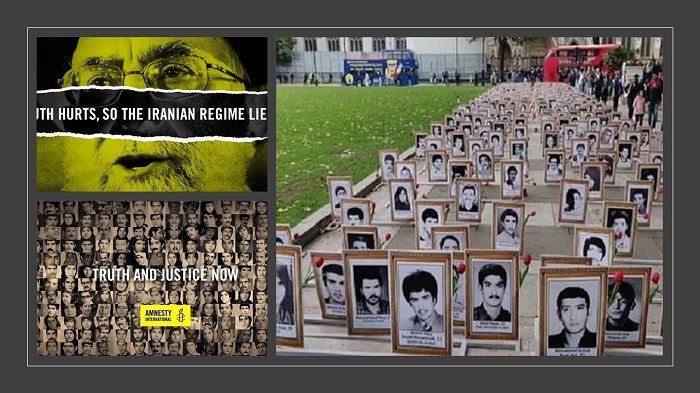
(PMOI / MEK Iran) activists were able to locate some of the mass graves but many were covered over by construction projects.
Last month, U.S. State Department spokesperson, Morgan Ortagus, placed a video on social media which showed how concerned she was about the Iranian regime judiciary persistently violating human rights. What has become of most concern is the lack of action regarding the mass executions that took place in July 1988.
The international community has turned a blind eye to the establishment of death commissions in that period which targeted the interrogation of political detainees about their views and affiliations. The worst aspect resulting from this was that those who refused to disassociate themselves from the opposition movement were executed. This move came about when a fatwa was issued by the regime’s founder and then-supreme leader, Ruhollah Khomeini. It was afraid that in the aftermath of the Iran/Iraq war that dissent would get out of control and the regime could lose its grip on power.
#Maryam_Rajavi welcomed the call by Morgan Ortagus on her tweet: I welcome the call for an independent investigation into the actions of the death commissions during the #1988Massacre and demand justice for the martyrs…..https://t.co/ouZb2NzZS3 #Iran #MEK #Iranian #FreeIran2020 pic.twitter.com/3C9CEkC7MS
— MEK Iran (Mujahedin-e Khalq) (@MEK_Iran) July 29, 2020
Sadly, religion was more important than the people’s right to freedom of belief and association so anyone who failed to follow the line of the regime was considered to be prisoners guilty of “enmity against God.” For this, the punishment was death, which resulted in groups of prisoners being hanged all at the same time and their bodies were loaded into refrigerated trucks and transported to secret mass graves.
Even though the regime never revealed the number of dissenters who met their fate in this way, the MEK was able to calculate that at least 30,000 were executed. This is a lot of people and evidence of these barbaric events was hard to conceal. MEK activists were able to locate some of the mass graves but many were covered over by construction projects.
https://www.facebook.com/MEK.Iran1/posts/824397671720008
Amnesty International revealed that as more of the evidence disappeared, these human rights atrocities would be hard to prove. The MEK has done a lot to try and force an investigation but this has largely just fallen on deaf ears. There are some influential Americans and Europeans who have consistently condemned the 1988 massacres.
Message of political prisoners in Evin Prison—Tehran, #Iran
We ask for a complete investigation by the UN into the 1988 massacre. This is an important step to stop executions in Iran.#1988Massacre#NoImpunity4Mullahshttps://t.co/Zz6nGinYGI
— People's Mojahedin Organization of Iran (PMOI/MEK) (@Mojahedineng) August 22, 2020
As the UN General Assembly comes closer there are likely to be serious discussions about Iran’s policy. It is time for the UN and its member states to address the atrocious human rights record of the Iranian regime and in particular, seek accountability for past crimes such as the 1988 massacre which had for some reason the regime gave themselves the license to kill.
It is not just this 1988 massacre that is of concern, but also the brutal murder of 1,500 unarmed protesters during a major Iran protest in November 2019. It is because the regime got away with the massacre of prisoners who were incarcerated for their beliefs that gave the regime the license to kill whenever they thought it was the right time to do so.
The time has come for the international community to conduct their own independent investigation into these human rights breaches with the final goal of filing charges against the perpetrators in the International Criminal Court.
In 1988, Iran's authorities forcibly disappeared and secretly executed thousands of political dissidents. For more than 30 years, their families have not know when, how and why their loved ones were killed They seek #truthandjusticenow for these crimes against humanity. pic.twitter.com/DWzetNLzUR
— Amnesty Iran (@AmnestyIran) August 25, 2020
